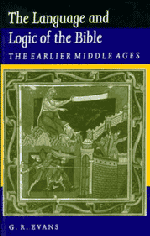Book contents
- Frontmatter
- Contents
- Preface
- Acknowledgements
- List of abbreviations
- List of ancient and mediaeval sources
- Biographical notes
- Introduction
- Part I The background
- Part II Lectio: surface and depths
- 4 Words and things and numbers
- 5 The historical sense and history
- 6 Exegesis and the theory of signification
- 7 Transference of meaning
- Part III Disputatio
- Conclusion
- Notes
- Select bibliography
- Index
4 - Words and things and numbers
Published online by Cambridge University Press: 01 June 2011
- Frontmatter
- Contents
- Preface
- Acknowledgements
- List of abbreviations
- List of ancient and mediaeval sources
- Biographical notes
- Introduction
- Part I The background
- Part II Lectio: surface and depths
- 4 Words and things and numbers
- 5 The historical sense and history
- 6 Exegesis and the theory of signification
- 7 Transference of meaning
- Part III Disputatio
- Conclusion
- Notes
- Select bibliography
- Index
Summary
Words and things
In his Sententiae of the 1150s Peter Lombard put together a collection of extracts from patristic and other authorities for convenient reference. He arranged them by topic, dealing first with the Trinity, then with creation and man's fall into sin, then with redemption and the virtues, and in a final book with the sacraments and the end of the world. He chose as the point of entry into his vast subject-matter Augustine's discussion of the way men learn about God: ‘As the most learned Augustine says in his book On Christian Learning, all learning involves either things or signs.’ Peter explains that man learns about God primarily through the things which God provides to instruct him, and secondarily through the signs of various sorts which point to those ‘things’ and beyond them to God himself. He mentions in particular under the first heading the ways in which the Creator may be known through his creatures, and under the second the way in which he may be known through the words we use to talk about him.
Peter Lombard's confidence that he is beginning from first principles here and will best carry his readers with him if he starts in this way, rests ultimately upon the general currency in his own time of Augustine's teaching on this point. But it is also a view which had done much to provide a thread of continuity of method in the study of the Bible since patristic times.
- Type
- Chapter
- Information
- The Language and Logic of the BibleThe Earlier Middle Ages, pp. 51 - 66Publisher: Cambridge University PressPrint publication year: 1984



